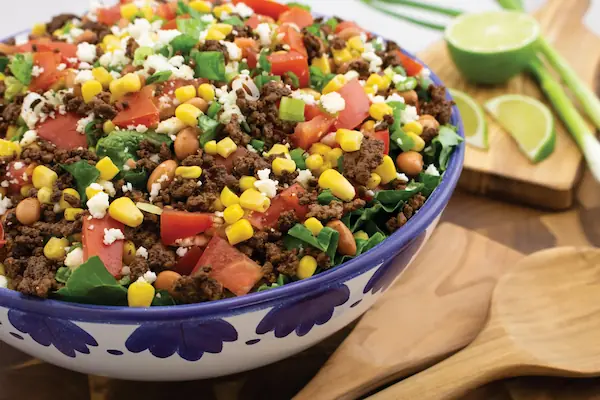What is a Leafy Green? Varieties & How to Use Them
Discover 10 easy and tasty recipes featuring romaine, iceberg, collard greens, and other favorite leafy greens! From nutrient-packed salads to hearty soups, these recipes highlight the health benefits and versatility of incorporating leafy greens into your diet. First, let’s dive into some facts about leafy green vegetables!
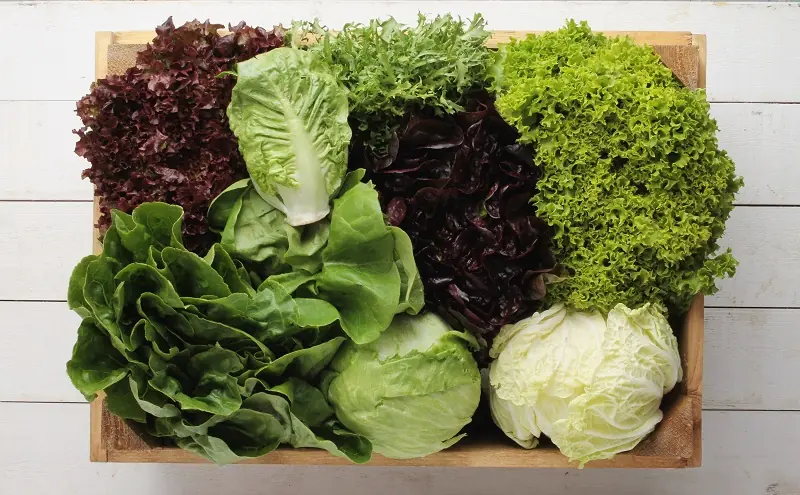
Leafy green is a term used to describe plants whose leaves you can eat as a vegetable. There is a variety of leafy greens to choose from, with all sorts of tastes and textures. Some of the leafy green varieties you can find are:

Romain Lettuce
A nutritious leafy green with crisp, elongated leaves and a crunchy texture commonly used in salads and sandwiches to add a refreshing taste and texture.
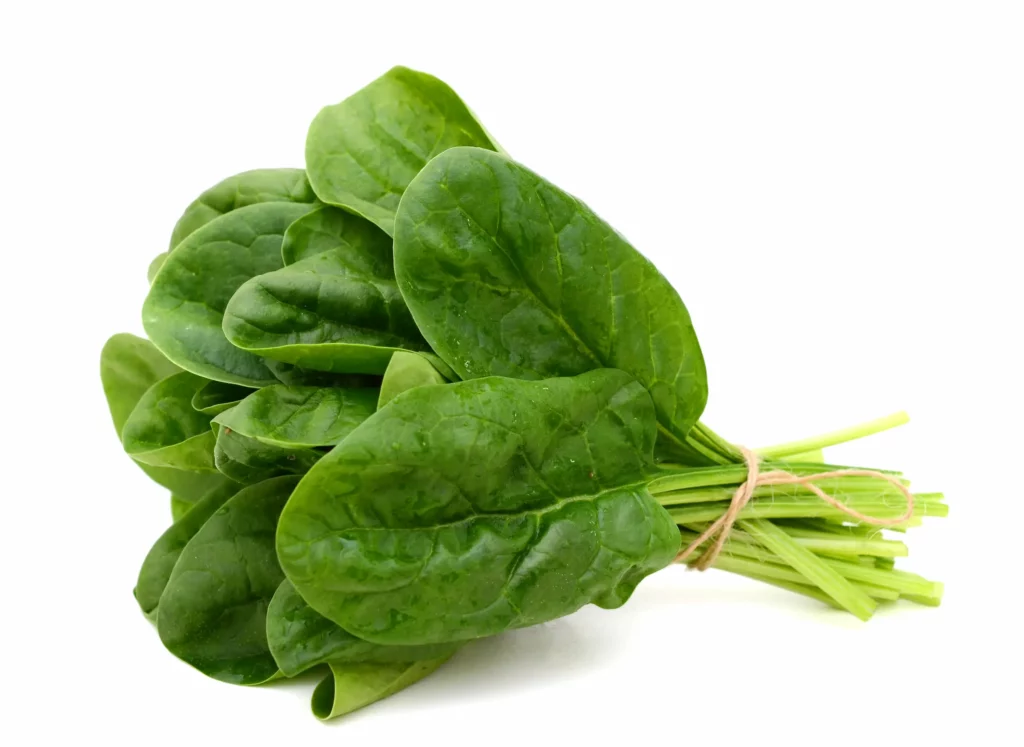
Spinach
Nutrient-rich dark leafy green with tender leaves and an earthy taste commonly used in salads, cooked dishes, and smoothies.
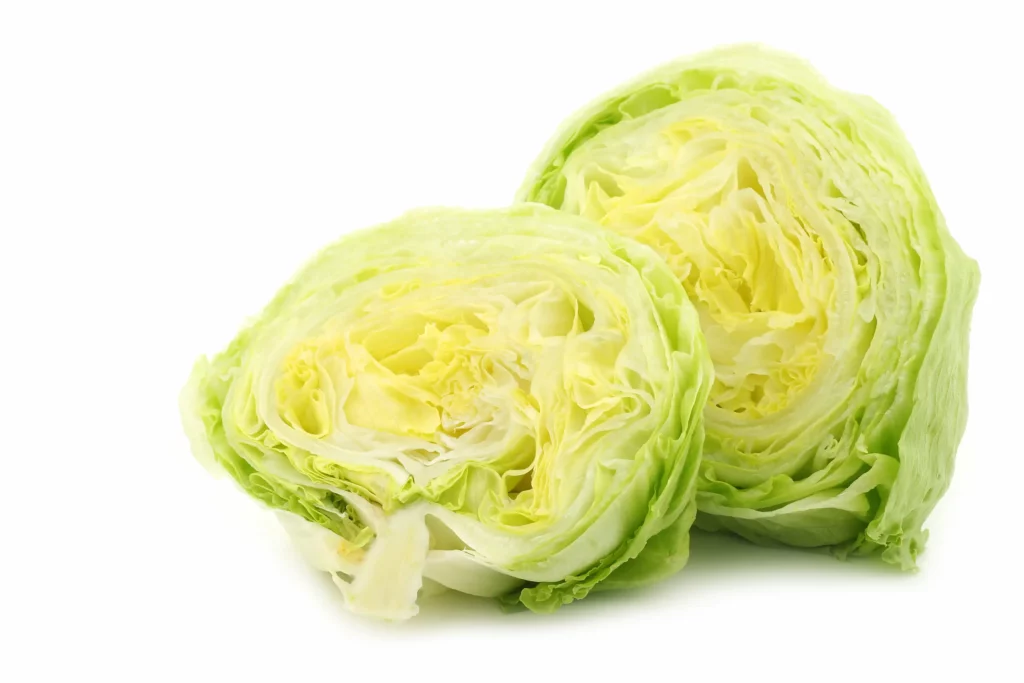
Iceberg Lettuce
This variety is pale green and has crisp crunchy leaves with a mild flavor and high water content. Use in salads, sandwiches, and wraps when craving a refreshing texture to dishes.

Butter Lettuce
A delicate lettuce with soft tender leaves and a subtle floral flavor. It is commonly used in salads, sandwiches, and wraps.
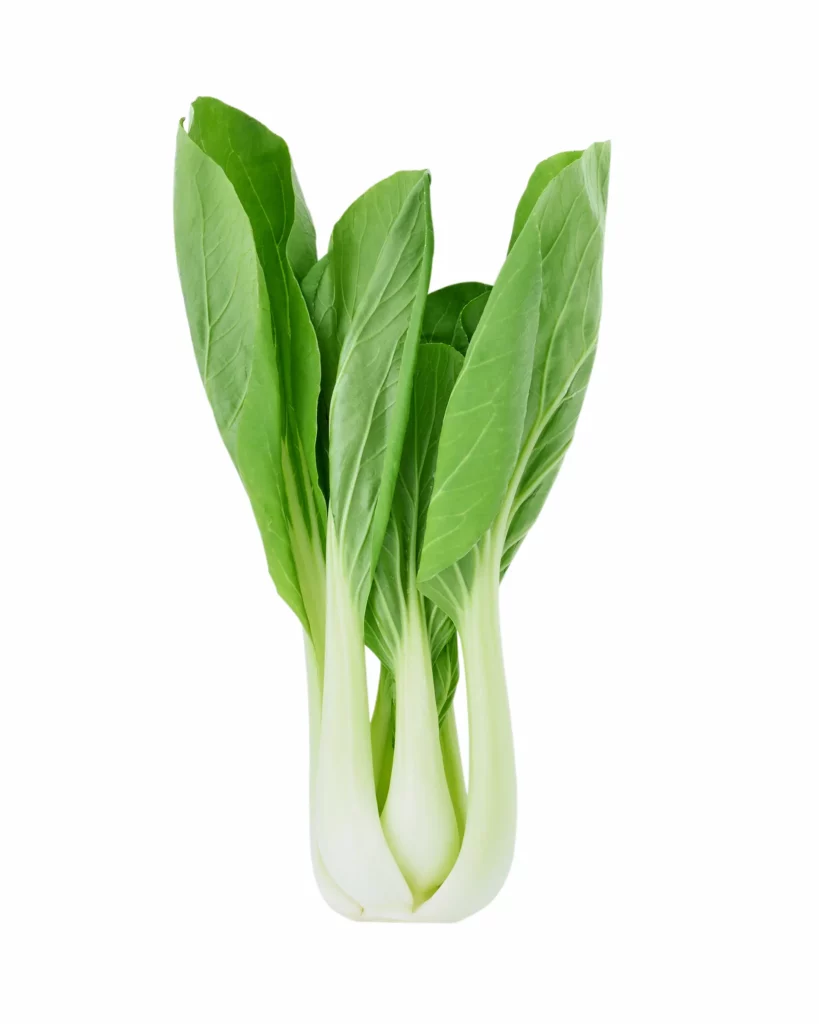
Bok Choy
This leafy vegetable has crisp, white stalks and dark green leaves with a mild, slightly peppery taste that is great for stir-fries, soups, and salads or slaws.

Beet Greens
The tops of beets have a texture similar to spinach or Swiss chard with a slightly earthy taste. They’re often sautéed or used in stews and soups.
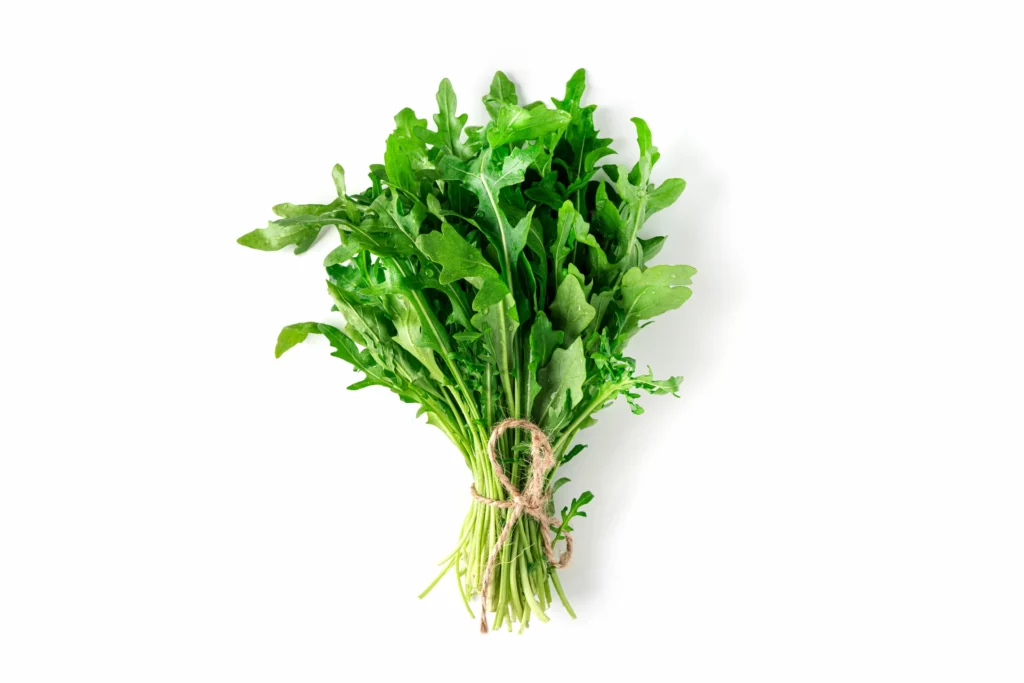
Arugula
This leafy green has slender, elongated leaves with a distinctive peppery flavor. This leafy green is often used in salads and sandwiches or as a garnish.
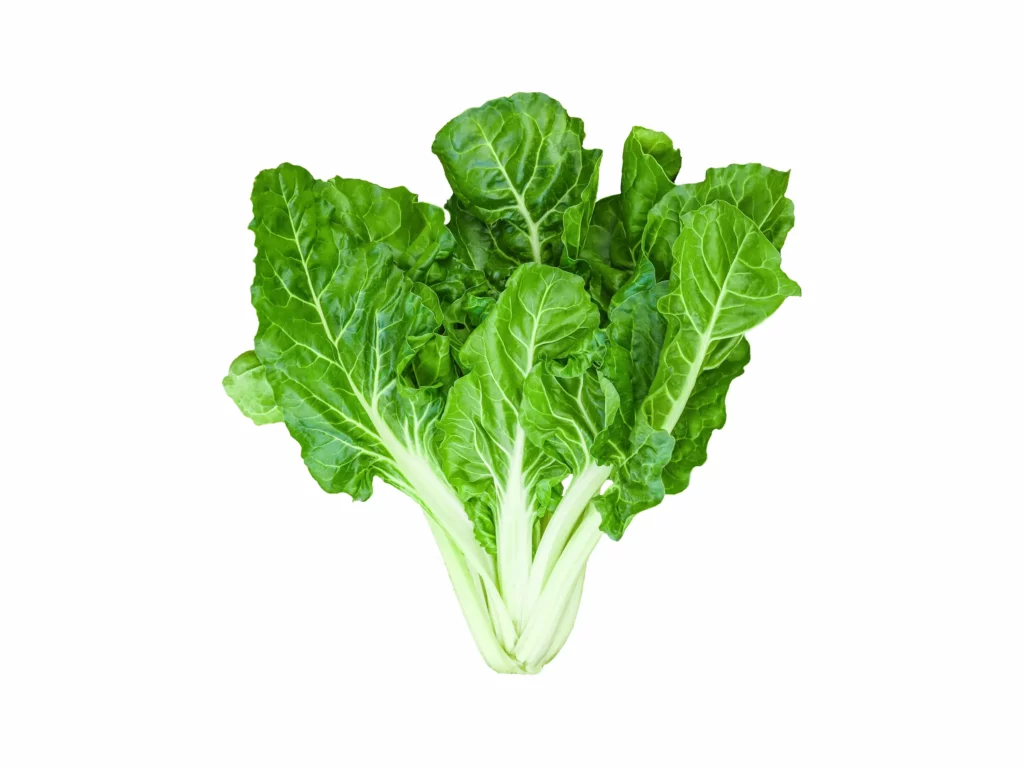
Swiss Chard
This leafy green has vibrant, colorful stems and large green leaves. It features an earthy flavor and tender texture commonly enjoyed sautéed and in soups or stir-fries.
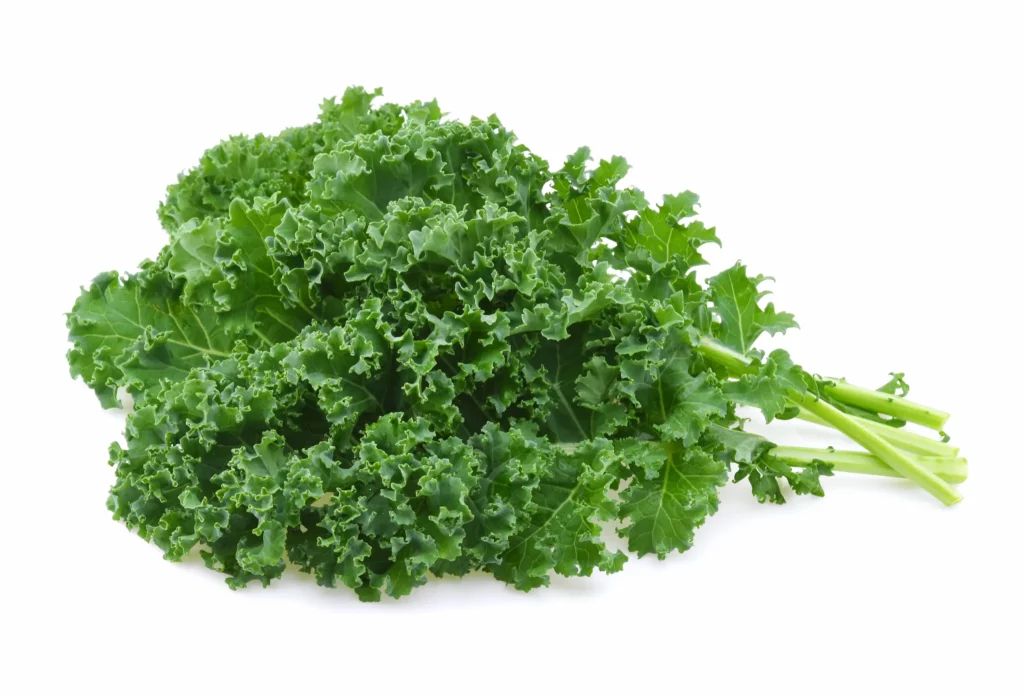
Kale
This hardy, dark green vegetable can have curled or flat sturdy leaves and has a slightly bitter flavor. It is fibrous and crunchy when raw and slightly chewy when cooked. When adding to salads, it’s best to massage it with your hands in a small amount of olive oil to make it more tender.

Collard Greens
This robust leafy green has large broad dark green leaves commonly used in cooked dishes like stews, soups, and side dishes where they are cooked low and slow to achieve tender leaves.
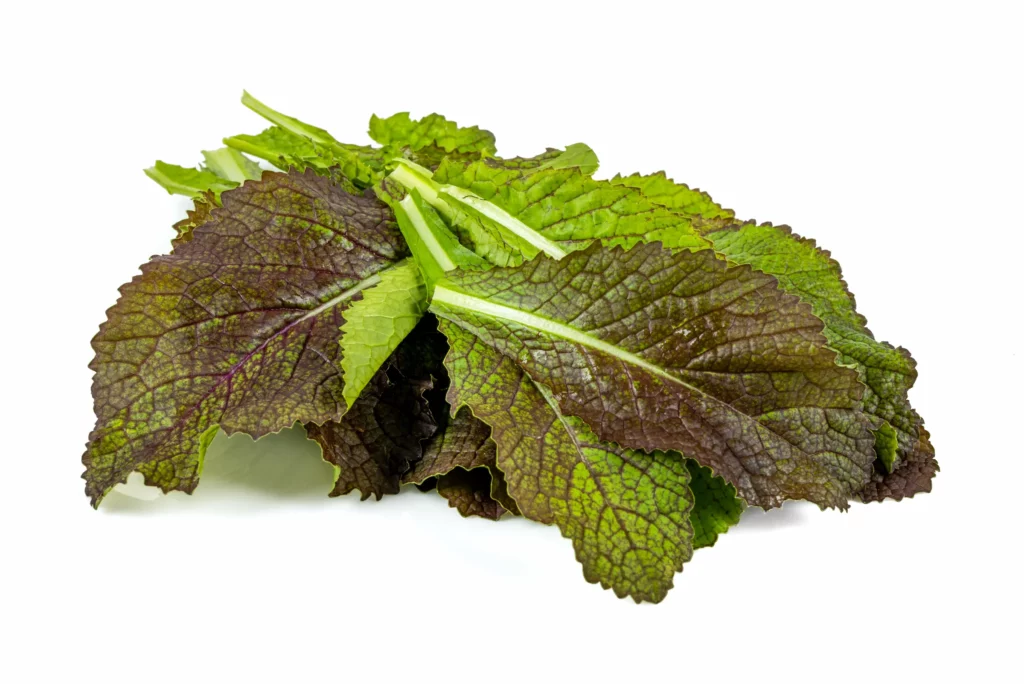
Mustard Greens
These jagged-edged tender leaves have a distinctive peppery flavor similar to mustard and are often added to salads, stir-fries, soups, and sautees to add a kick.
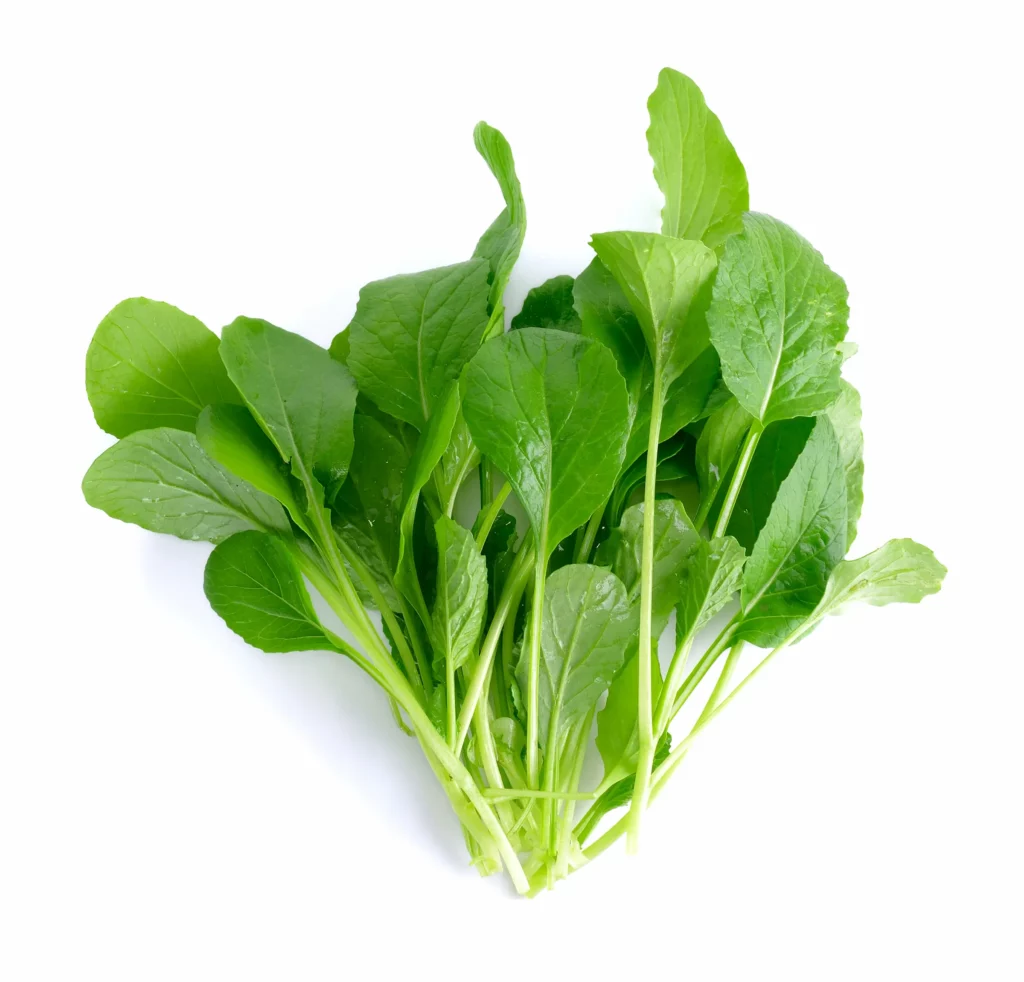
Turnip Greens
The leafy tops of the turnip plants are vibrant green and have a slightly bitter taste and texture similar to spinach, it is often added to soups and stews.
What is a serving of leafy greens?
One serving of leafy greens is different depending on if you eat your leafy greens raw or cooked.
Raw = 2 cups of unpacked leaves
Cooked = 1 cup of cooked leaves
If you keep in mind that raw leafy greens shrink when cooked, therefore 2 cups of the raw leafy greens will wilt to about 1 cup of cooked.
How to Choose Leafy Greens
To buy the freshest leafy greens, choose leaves that look crisp, clean, and vibrant in color. Avoid bunches that look wilted, yellow, or slimy. The stems should appear bright green or white and crisp, not dried out or brown. Choosing the freshest leafy greens at the store will ensure they stay fresh and last a long time in your fridge at home.
How to Store Leafy Greens
When you bring your leafy greens home, first start by washing the leaves to remove any dirt and pat the leaves dry. Next, look through your leafy greens and remove any leaves that look wilty, yellow, or slimy. These can make the fresh leaves spoil faster if stored together. To keep your leafy greens fresh in the fridge, wrap them in paper towels and store them in plastic bags or containers that allow for airflow.
If your refrigerator has one, store your leafy greens in a crisper drawer to keep them extra fresh. Whole heads of lettuce, cabbage, kale, or collards will last longer in the fridge than loose salad greens or pre-chopped leafy greens. Leafy greens stored in the fridge can last up to 10 days.
Freezing
Freezing is a great way to extend the shelf life of almost any food. This works best with leafy greens that withstand heat like kale, swiss chard, cabbage, spinach, or collard greens. We recommend always blanching any vegetable before freezing. See our four simple steps to freezing leafy greens below!
- Rinse and cut greens to the desired size.
- Bring a pot of water to a boil. Add greens and cook 30 seconds.
- Prepare a layer of clean kitchen towels or paper towels on the countertop.
- Drain and add the cooked greens onto the towels. Allow to sit 3-5 minutes to absorb extra water. Place greens in a freezer-safe storage bag or container and freeze 8-12 months.
Simple Recipes Featuring Dark Leafy Greens
These 10 Choose Homemade recipes will get you inspired to use leafy green vegetables in your kitchen!
Beefy Taco Salad
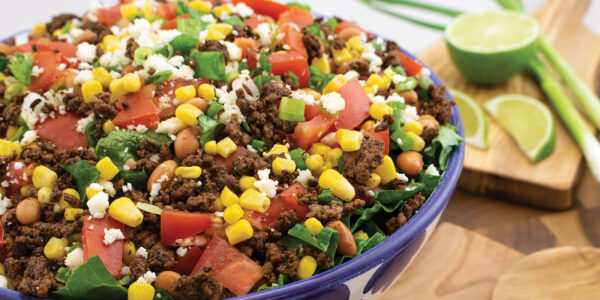
This Beefy Taco Salad recipe features fresh romaine lettuce with all your favorite taco toppings and is a great low-sodium version of a family favorite taco salad.
Turkey Lettuce Wraps
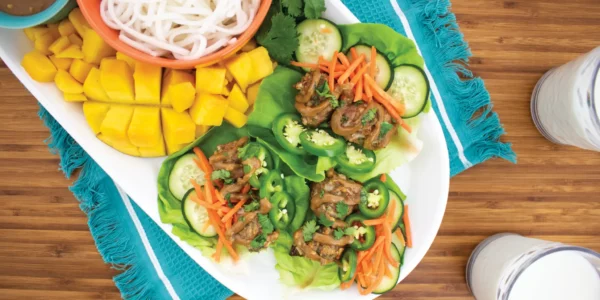
These Turkey Lettuce Wraps use butter lettuce leaves to make tasty Asian-inspired lettuce wraps. This is a perfect recipe to try out new flavors and it is also a 1 for 1 recipe, meaning it is low in sodium!
Southern Black-Eyed Peas & Collard Greens
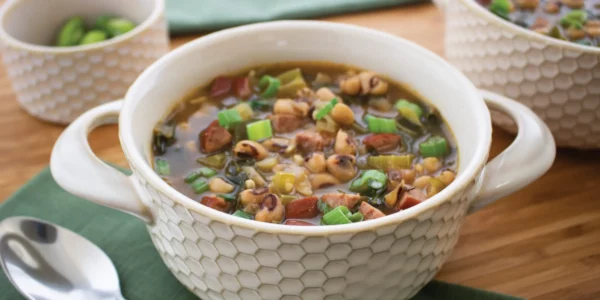
This recipe for Southern Black-Eyed Peas & Collard Greens is a tasty use for collard greens and uses frozen black-eyed peas for quick prep.
Chimichurri Steak Salad
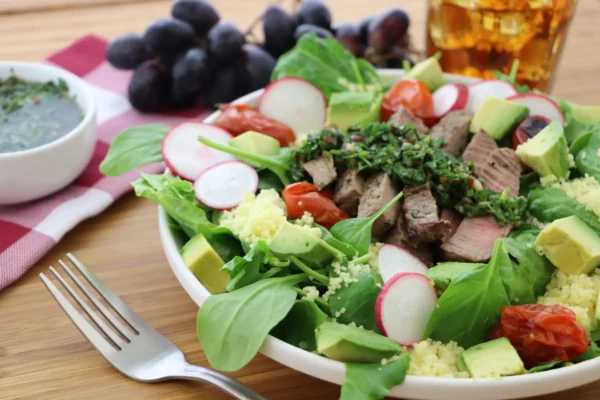
This Chimichurri Steak Salad is low in sodium and ready in 30 minutes. It features mixed salad greens that could easily be substituted for the leafy greens of your choice.
Homemade Spinach Pesto

Homemade Spinach Pesto is a quick low-sodium recipe to make ahead for the week to have on hand as a pasta sauce or a dip for veggies.
Peachy Pecan Salad
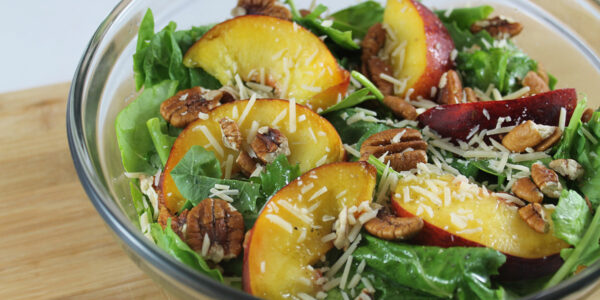
This Peachy Pecan Spinach Salad uses spinach or any mixed green and is a great way to get a serving of fruit in with your meal!
Sweet Potato Turkey Bake

Our Sweet Potato Turkey Bake is a great meal-prep option that can guarantee you a healthy breakfast to heat and eat all week long.
Tuscan Steak Pasta
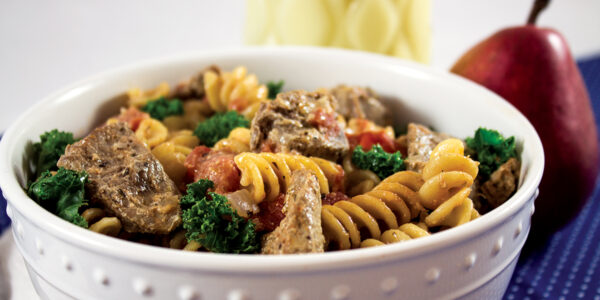
This Tuscan Steak Pasta uses fresh kale and is tossed together in a delicious garlic cream sauce with parmesan that will leave you feeling full and satisfied.
Kale Barley Soup

This Kale Barley Soup features fresh kale and comes together in one pot in 30 minutes and is a great freezer-friendly option.

